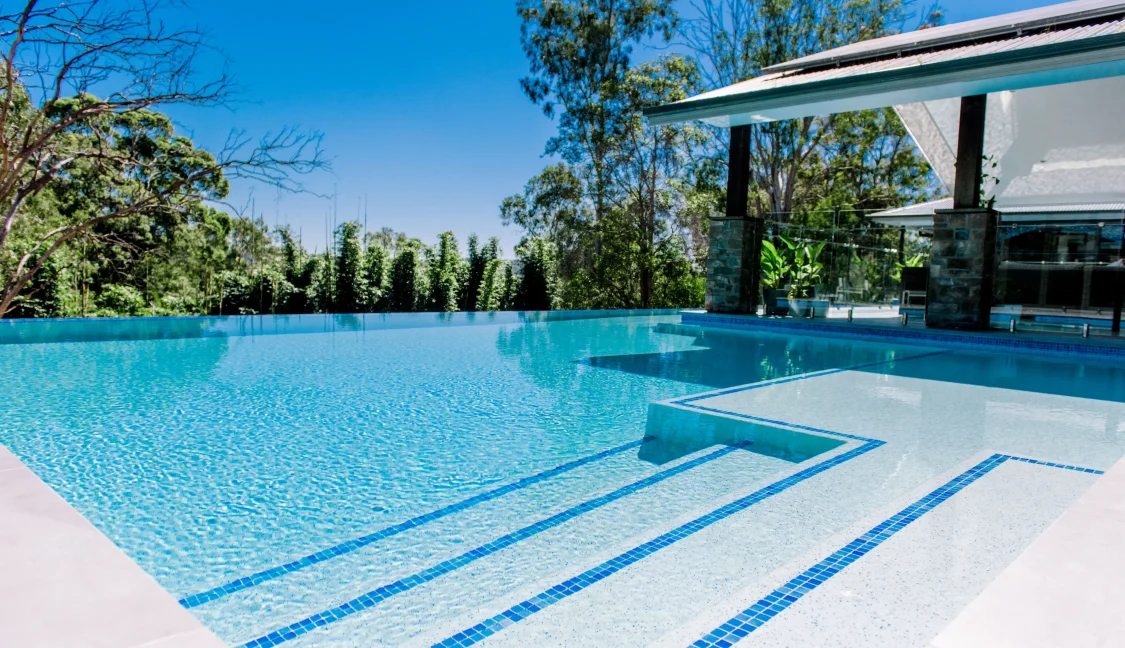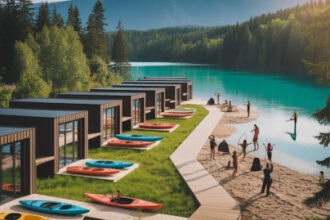Building a backyard oasis is one of the most exciting—and expensive—projects a homeowner can undertake. Whether you imagine weekend pool parties, early-morning laps, or simple summertime relaxation, knowing the true price tag up front will spare you budget shock later. A thorough pool cost estimate factors in design choices, regional labor rates, long-term maintenance, and the hidden extras that creep in once construction begins. Use this guide to understand each element so you can plan with confidence and avoid common money-draining surprises, notes Suffolk property management.
Key Factors That Shape Your Pool Cost Estimate
Before you assign any numbers, identify the variables that push a project from “affordable luxury” into “second-mortgage” territory. First is pool type—gunite, vinyl, fiberglass, or even a trendy stainless-steel plunge—all carry different material and installation costs. Second is size and depth. A modest 10×20-foot rectangle is dramatically cheaper than an expansive free-form lagoon with a 9-foot deep end. Third is site condition: soil stability, slope, and access for heavy machinery determine how much excavation crews must charge. Finally, factor in local labor rates and permitting fees, which can vary by thousands of dollars between municipalities.
Standard Cost Breakdown
Most budgets fall into four overarching buckets:
- Excavation and Shell (35-45 %)
Digging, forming, and pouring or placing the shell consume the largest single share. Rocky or unstable soil can inflate this figure quickly. - Plumbing, Filtration & Electrical (15-20 %)
Pumps, filters, heaters, salt-chlorine generators, lighting, and their installation create a sizable but unavoidable expense. - Decking & Coping (15-20 %)
Decorative concrete, pavers, or stone surrounds turn a hole in the ground into an inviting entertainment space. Material choice drives this number up or down. - Finishes & Aesthetics (10-15 %)
Interior plaster, tile mosaics, waterline features, steps, benches, and sun shelves bring personality—and cost—to the project.
Planning with these percentages lets you test “what-if” scenarios quickly. For instance, upgrading to glass tile may only shift the finishes line item, but expanding the pool’s footprint inflates every category at once.
Hidden or Long-Term Expenses to Keep on Your Radar
The price on your builder’s proposal is only part of the story. Water and electrical utilities rise as pumps and heaters run daily. Chemicals—whether traditional chlorine, salt, or mineral systems—average $600-$1,000 per year. Seasonal maintenance like opening, closing, and periodic acid washing should be penciled in too. If you live in a freeze zone, add the cost of a durable safety cover and winterization services. Insurance premiums may tick upward when you install a pool, and some HOAs require additional fencing or alarms, further raising the final tab.
Using an Online pool cost estimate Tool
Once you grasp the individual cost drivers, plug them into a reliable calculator to turn theory into numbers. Online tools gather real-time material prices, average wage data, and regional code requirements, spitting out a ballpark figure in minutes. Adjust variables such as pool shape, finish, heating method, and decking material to see how each tweak shifts the subtotal. Because the tool reflects current market rates, it can also serve as a negotiating reference when comparing contractor bids. Run multiple scenarios before meeting builders so you enter discussions armed with realistic expectations instead of optimistic guesses.
Practical Tips to Keep Your Budget in Check
- Choose standard shapes and dimensions.Custom curves add visual flair but require specialized framing and finishing crews.
- Phase non-essentials.Install LED laminars, slides, or outdoor kitchens after the initial build to spread costs over time.
- Optimize energy efficiency.A variable-speed pump and solar cover yield lower monthly bills, offsetting a slightly higher upfront price.
- Bundle features.Many contractors discount equipment packages—pump, filter, heater—when purchased together.
- Request multiple bids and itemized quotes.Transparency exposes padded contingencies and lets you negotiate from a position of knowledge.
Final Thoughts: Turning Numbers Into Enjoyment
An accurate pool cost estimate is not about cutting corners but about aligning dreams with dollars. By accounting for core construction, everyday operation, and hidden extras, you prevent budget creep and project delays. Use online calculators, vet contractors thoroughly, and build in a 10 % contingency for the inevitable surprise. When the last stone is set and shimmering water fills the basin, you’ll float peacefully knowing the only thing deep about your pool is the enjoyment—not unexpected debt.














